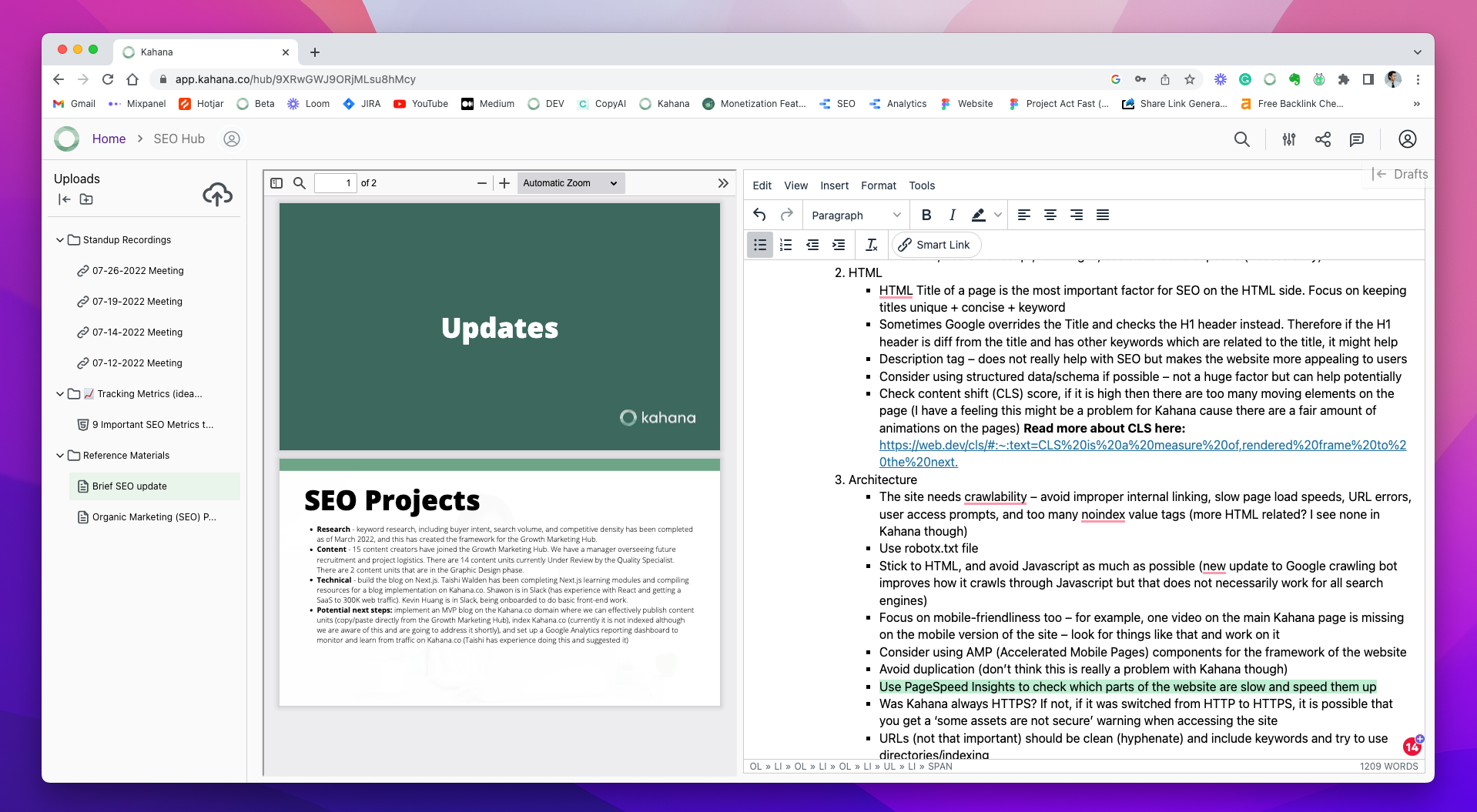B2B SEO Strategy, Tips, & Template for 2025

Topics covered ✅
- B2B SEO statistics
- B2B Keyword research
- B2B SEO strategy 2023
- Importance of SEO for B2B
- What is B2B?
- Keyword research SEO
- SEO statistics for 2023
- Best SEO for website
B2B SEO is an array of optimizations that you can make to your content to aim it at a small group of high-value decision-makers or company buyers.
This often takes the form of useful content, thought leadership, or any type of content that foster the kind of long-term relationships that build confidence with the buyer.
1. Establish Goals
Pursuing a B2B SEO strategy isn’t a random decision that you will arrive at, it will be because you have decided that targeting a small number of decision-makers is most well-suited to achieving your goals.
Establishing goals, leveraging audience research tools, and understanding your audience are the first steps in a B2B SEO strategy and it can often be difficult to decide which is more important to do first.
There may be cases where your goals dictate the necessary audience but it is equally possible to imagine a situation in which the reverse is possible.
Your targets should stick to the SMART acronym. This way of setting targets ensures that your targets are
- Specific
- Measurable
- Achievable
- Relevant
- Time-based
These targets describe your ambitions for the project and so they may lead you to decide that a B2B SEO strategy is the best method forward.

Claim My Free B2B SEO Template
This hub template comes pre-populated with documents, files, notes, and videos that will help you improve B2B SEO.
2. Understand Your Audience
So, you’ve set your goals and have decided that the best way to achieve them is by targeting a narrow group of influential buyers for businesses.
In order to be, in any way, successful with a B2B SEO strategy it is crucial that you have a deep understanding of your audience and conduct content research.
This will inform the content you make and is an essential step in the early planning stages of the content strategy.
A great exercise for understanding your audience is by going through the process of building a buyer persona.
Buyer Persona
A buyer persona is an idealized representation of a section of your audience that you want to target. It includes things such as demographics, traits, and motivations and for B2B SEO, you already know that you will be targeting a small audience of decision-makers and this is a great place to start from.
In order to consider who your target audience is you will need to carry out some market research to analyze what the current landscape looks like. This may involve looking at your competitors or analyzing broader trends in your industry to see where new potential customers may come from. Also, it's important that you reflect on your current customers.
Demographics
Where do the majority of your sales come from now and is that market growing or shrinking?
Demographics based on this market research will tell you the type of companies that you’re aiming for. Their size, location, and performance may all be useful parameters in evaluating their suitability to target. It’s also important to consider the buyers' intentions when considering your content.
We know that when making purchasing choices on behalf of a company, these buyers are deliberative in their decision-making. You should also reach out to existing customers through surveys and feedback in order to find their pain points and wants.
Collecting all these factors together allows you to effectively visualize your audience and devise a successful and optimal campaign for them.
3. Create On-Page and Off-Page Strategies
Setting effective goals for the strategy and building a buyer persona is an essential process in understanding your audience and deciding the type of content to make and now that you’ve done that, you can begin to think about the type of optimizations you can make for your content to ensure that it gets noticed by that audience.
The goal of SEO is to help search engines and your audience understand the content of your output in order to prioritize credible sources and return relevant searches.
The main optimizations that you can make are split into a few main categories but mainly they can be described as on-page and off-page. On-page optimizations are the type of optimizations that you make to the thought leadership content itself. This would include things such as keyword usage, choosing the correct titles, and word count.
Off-page SEO is another type of optimization that isn’t made to your content. These are almost all related to backlinks. The type, number, and quality of backlinks are all relevant factors in your results ranking.
Sometimes people may describe technical SEO as a separate category. These are really just a type of on-page SEO but they include things such as the website load speed, image descriptions, and mobile friendliness.
4. Optimize the Correct Keywords
One of the main optimizations that you’ll make to your content is the keywords that you decide to use. Keywords are what a user will enter when carrying out their search in order to be directed to your content.
You can see why it’s important at this stage to have a deep understanding of your audience because in order to capture a percentage of that traffic, you have to know what they’re searching for. Coming up with the correct keywords is a process that requires research of its own and here we will discuss a few ideas in order to capture as much relevant traffic as possible.
To do keyword research, a great place to start is the Google Keyword Planner.
Audience Intentions
First of all, consider your audience's intentions when coming across your content. For B2B we know that the buyer is likely carrying out a lot of research. So ask yourself: what are the questions and tools that you can provide in your content that will help them start to build a positive relationship?
Shoulder Topics
Also, consider shoulder topics. Shoulder topics are topics that are related to but do not directly cover the service that you’re selling. By doing this, you can avoid the common mistake that many creators make which is that your content may feel too much like a push for a sale.
Shoulder topics also indicate to the reader that you have an understanding of the broader industry landscape and this can demonstrate credibility.
Once you have brainstormed a few keywords that you think will be relevant to your business then you can start to think of different variations in order to capture searches that have a similar intention but may have been phrased slightly differently.
Google Autocomplete Suggestions
The easiest way to do this is to consider synonyms for your keywords but also you can use Google’s Autocomplete suggestions.
Start by typing in the keywords that you already have and see what the suggested and related searches are. These recommended searches are ones that Google thinks are related to what you searched and are therefore highly likely to be relevant to the content that you want to create.
5. Don’t Forget Technical SEO
In terms of technical improvements, there are a huge number of optimizations that you can make to your site to improve your ranking but they’re not limited to a B2B SEO strategy, so we’ll just highlight the basics here.
In order to even be on search engines at all, your website must be able to be crawled by those search engines so that you are in their index.
6. Google Search Console
This can be as simple as a single line of code on your website. Try Google Search Console to check the status of your site to see if it’s been indexed or how to fix it if not.
Next, simple things such as improving site organization can help. The content of the page should be clear in the URL, your content should be linked internally through categories and tags and you should also ensure that the tags, titles, and categories are highly optimized.
These things are not necessarily a B2B specific strategy but they come together to improve the overall experience and quality of your site.
7. Quality Content Best Practices
Google's dominance in search engines came in the 90s when it made the decision to use backlinks as an indicator of a site's usefulness.
Since then the process has become much more refined but the central idea remains that a site that is regularly linked to other sites is trustworthy and valuable and will therefore rank highly.
So, how does knowing this affect the type content decisions you will make? The key is quality content.
With B2B SEO you are taking a low search volume approach but in order to rank for those searches, alongside the types of on and off-page optimizations that we mentioned above, you need to provide value to your audience in order to earn those backlinks.
The kind of quality content that is likely to earn those backlinks could be a thorough and detailed guide or it could be a simple but useful tool, the key is that it addresses a pain point of your audience.
Consider the buyer's journey when they discover your content. There are different versions of this journey but it can be simplified into the awareness stage, the consideration phase, and the decision phase.
By putting out a high-quality, compelling piece of content, you aim to capture your audience and establish the awareness phase of that journey.
At this stage, you look to build a relationship with the customer and hope to start driving them through to the later stages through continual engagement.
At the time that your customers come to the end of their research, your content should be at the front of their minds and hopefully, that will convert into a sale.
The Bottomline
In summary, a B2B SEO strategy can be a highly rewarding one if carried out with care and planning.
The value can be felt not only from the end result of a successful strategy but also we hope that the process of reflecting upon your goals, your audience, and the implementation of your strategy is valuable in and of itself.
Hopefully, you emerge from this process not only reaching your intended audience but also having a deeper understanding of them and the optimal quality content to share with them.

Talk with a Kahana representative
Fill out your information and a Kahana team representative will reach out to you. Have a simple question? Search our library of articles
